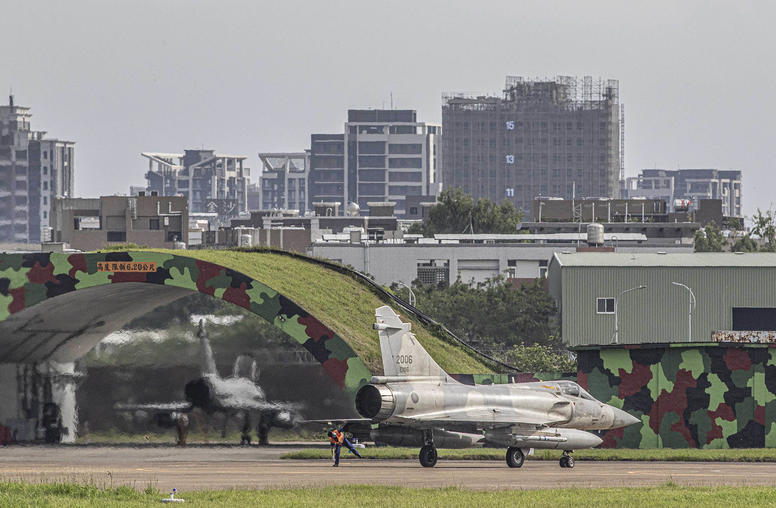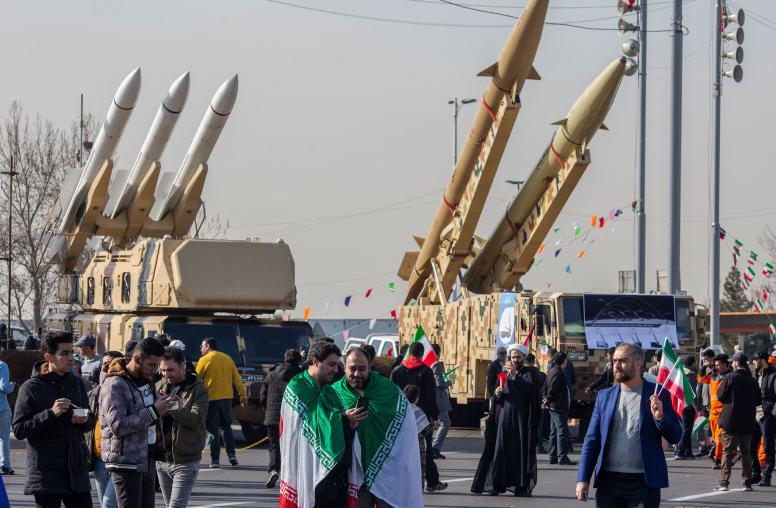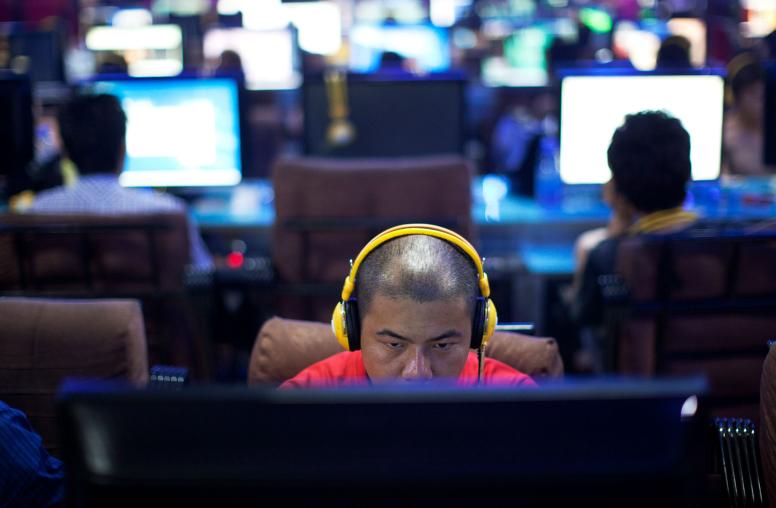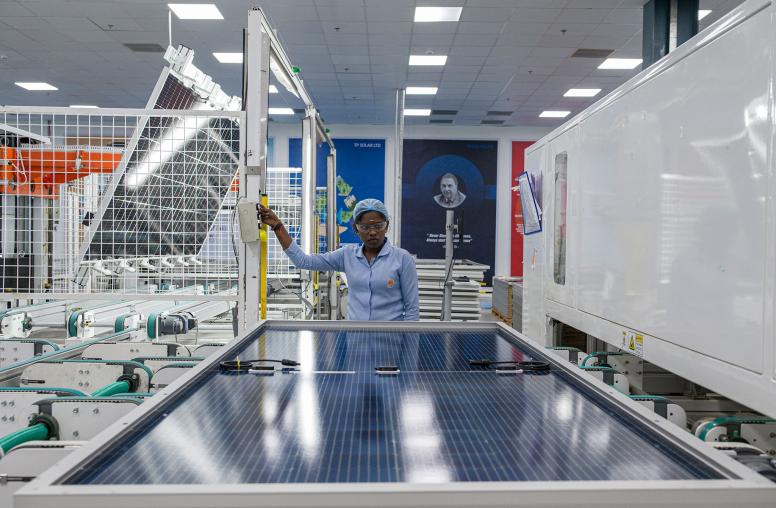Sameer Lalwani on the Future of U.S.-India Relations
The United States and India have a common cause in their tensions with China, as well as a “natural partnership” on technology investments, says USIP’s Sameer Lalwani. But India remains noncommittal when it comes to Russia’s war on Ukraine: “They’ve concluded that they need Russia to stick around.”
U.S. Institute of Peace experts discuss the latest foreign policy issues from around the world in On Peace, a brief weekly collaboration with SiriusXM's POTUS Channel 124.
Transcript
Julie Mason: Joining me now, Sameer Lalwani is senior expert on South Asia at the U.S. Institute of Peace. Here to talk his about his work on India relations. Sameer, good morning.
Sameer Lalwani: Good morning, Julie.
Julie Mason: How are you?
Sameer Lalwani: I'm doing well.
Julie Mason: I'm glad to hear it. India has been a notable outlier in the in the Ukrainian saga. Tell us about it. Why did they take that position?
Sameer Lalwani: Yeah, well, India has had a long-standing relationship with Russia for, basically since the 1950s. During the Cold War, they were very close partners, some would even say allies after the 1970s. They’ve got a long relation of geopolitical alignments [and] of defense relations. A lot of Indian arms and weapons platforms are sourced from Russia or the Soviet Union. Some estimate, I've estimated, as much as 85 percent. And so, it's really dependent on that Russia relationship. It has different calculations than the United States about Russia's future as a balancing actor in Asia, even against China. And so, they've concluded that they need Russia to stick around, that they have important equities in Russia, and the invasion of Ukraine, notwithstanding, they plan to ride it out with Russia.
Julie Mason: But as you write, Modi, at least, seemed to have some doubts that this was a great time for war.
Sameer Lalwani: Certainly, I think the Indians are dead-set against the actual act of war in Ukraine. I think, in a way, they're probably taking a position of, you know, a pox on both their houses, that neither side should be engaged in war, in part because, obviously the human tragedy, but the effect on the economy, the global economy, for the global south has been pretty devastating. The supply chains have been affected, inflation has increased, access to critical goods has really affected not only India, but a lot of India's friends and partners in the global south. So, it's speaking from a position of this is incredibly disruptive to the global economy, you guys both need to cut it out. But not necessarily taking a side as to who's at fault here.
Julie Mason: I mean, Sameer, do you think like if Russia emerges from this in pretty bad shape, which seems plausible, right? It’s at least plausible that their economy tanks, they've had a brain drain, the global realignment and they are in a weaker spot than they are now. Will that make it easier for the U.S. to drive a wedge between India and Russia?
Sameer Lalwani: I think it certainly could be if that's what actually materializes. And this is where I think the crux of the…there's an analytic difference between the Indian and U.S. strategic communities. I think the U.S. has expected for a long time that Russia had thrown itself off a cliff, that it was going to be utterly dependent on China going forward, that their economy would tank, that they would be sort of short of critical microelectronics to make sort of the equipment and the, you know, the weapons systems that India sources from Russia, but India doesn't see it that way. And this is sort of a puzzle for us. They think that Russia is going to come out of this unscathed, relatively unscathed. They see that Europe will sort of have to make terms with Russia, that the wedge between China and Russia is a lot deeper than we appreciate and Russia will never submit to being a junior partner of China. And so, we have different bets based on different assessments, and I think, the next year or two will just bear out who is correct on this.
Julie Mason: What does India need from the world?
Sameer Lalwani: Well, I think, first and foremost, it needs capital and investments to power its economy, to invest in infrastructure in the economy, for job creation. India's got a wealth of human talent, 1.3 billion people and huge markets, incredible engineering and research and development talent, but not necessarily the capital invested to harness at all. And I think that's what it's looking for from the world.
Actually, the Indian national security advisor is in town this week in Washington, D.C. to meet with the U.S. national security advisor on an initiative on critical and emerging technologies. And there's a natural partnership between the U.S. and India on a lot of these future technologies. India's got excellent scientists when it comes to artificial intelligence, autonomy, biotechnology, but it requires a lot of U.S. probably private sector investment in India to harness that and to create a collaborative environment but that’s going to depend on external parties.
Julie Mason: Meanwhile, India and China are having some clashes, military ones, which is actually giving China, you know, Chinese troops, some, you know, on-the-ground experience.
Sameer Lalwani: That's true. And this has been going on for a while I think the peak of this may have been in the summer of 2020 when China, you could say, surprise attacked India on a disputed border. And part of the reason why it's hard to sort of describe these as attacks is because this border has been disputed and un-demarcated for, you know, several decades now. And the Indians were caught by surprise, they had the first deaths on this border in about 50 years, first shots fired on this border in about 50 years. And since then, tensions have been fraught.
There has been some de-escalation in some sectors of the border, but increased tensions in others, and most recently in December of this past year, there was arguably, what is reported to be a Chinese raiding party that attacked some posts on the Indian border. And there were more significant casualties, although perhaps not deaths. But this is, you know, this is going to be a high point of tension. The U.S. National Defense Strategy has identified this as sort of one of the three critical flashpoints of sort of sites of aggression of the Chinese People's Liberation Army. So, Taiwan, the South China Sea, but then the border with India. And so, they are regularly facing down a threat from China on a daily basis. And that is what I think sort of makes common cause with United States more than anything else.
Julie Mason: Wow, really interesting. Sameer Lalwani from the U.S. Institute of Peace. Thank you so much for joining me.
Sameer Lalwani: Thanks for having me.
Julie Mason: Have a good day.



